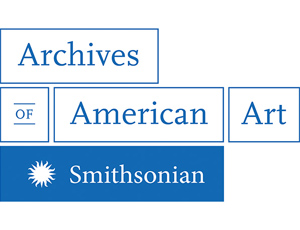New Collections: Oral History
Ben Gillespie, the Arlene and Robert Kogod Secretarial Scholar for Oral History, reflects on four oral history interviews recently conducted for the Archives of American Art
:focal(424x345:425x346)/https://tf-cmsv2-smithsonianmag-media.s3.amazonaws.com/filer_public/18/54/1854997b-f3eb-4c2a-941c-ed295cb5ea72/bernstein-teaser.png)
In 2021, the Archives’ oral history program embarked upon a new phase of remote interviews. Building on the experience of the Pandemic Oral History Project (2020), which collected short-form remote interviews with more than 80 participants, the Archives will conduct dozens of long-form oral histories remotely through 2023. The new voices they feature will expand and reshape the history of the visual arts in the United States. This pilot project is funded by the Alice L. Walton Foundation.
/https://tf-cmsv2-smithsonianmag-media.s3.amazonaws.com/filer_public/3d/e1/3de1e187-f1c3-45a3-845f-d61c01c825f0/gillespie_fig_1_for_blog_sv.jpg)
The Archives is honored to have recorded its first oral history for the project with photographer Hiram Maristany (1945–2022), just before his death in March 2022. Known for capturing the vibrancy of El Barrio in New York City, Maristany’s candid images bolstered solidarity for social causes. In conversation with E. Carmen Ramos, chief curatorial and conservation officer at the National Gallery of Art, Maristany details his early life and the necessity of activism in the face of gentrification and racism; his work documenting the political and social action organization the Young Lords; and how Native American heritage shapes Puerto Rican and New York history.
/https://tf-cmsv2-smithsonianmag-media.s3.amazonaws.com/filer_public/32/7f/327fec84-ab08-40f8-954b-3e046dec7c50/gillespie_fig_2_for_blog_sv.jpg)
Speaking from her home in San Francisco, printmaker and muralist Ester Hernández (b. 1944) delves into the personal and communal histories of her representations of Chicana women, works that have driven activism for decades. During her interview with Melissa San Miguel, a member of the advisory committee for the Mission Murals Project at SFMOMA, Hernández describes the importance of her family in inspiring and supporting her work; the story behind her iconic 1982 Sun Mad print, which exposes the grim realities of agricultural labor obscured by marketing; and why portraits of women are the foundation of her practice. “I wanted to honor, portray the strength and dignity of these women . . . who inspired me,” she explains, “to give them life . . . to be able to share them, their beauty.”
From her studio in Chinatown, New York City, Judith Bernstein (b. 1942) recounts the historical counterpunches she has made in her feminist and antiwar paintings, which mock oppressive social norms and bigotry. Throughout her conversation with Melissa Ho, curator of twentieth-century art at the Smithsonian American Art Museum, Bernstein describes compassion as the root of her activism; the adversity she faced building her career in the arts; and her love of teaching. On her work with the Guerrilla Girls and other feminists throughout the 1970s, she reflects, “That connection between women were what sustained me . . . we all had the same agenda . . . we wanted a lot more than what we were getting.”
/https://tf-cmsv2-smithsonianmag-media.s3.amazonaws.com/filer_public/41/1c/411ca52a-f4d2-4964-a8c0-6c318e1d5744/bernstein_siv.png)
Palestinian-born Samia Halaby (b. 1936), known for blazing trails in both her abstract painting and her early adoption of digital work, narrates her experience of working at the margins while serving as a beacon to marginalized communities. Halaby’s conversation with Melissa Ho covers her extensive teaching experience and the pushback she faced in academic spaces, her endowment of a foundation that puts Palestinian culture on the international stage, and the importance of local and global solidarity. On the history of art that compels Halaby today, she says, “You have to go underground, you have to search for it, you have to make an effort to even know it’s there to study.”
The remote interview format affords the Archives new flexibility in connecting interviewers and interviewees, as online platforms enable artists to share their experiences, traditions, techniques, and stories despite ongoing public health crises and global conflict. Through this project, the Archives is finding new ways to preserve and honor the living memories of significant figures across the visual arts in the US.
This text originally appeared in the Fall 2022 issue (vol. 61, no. 2) of the Archives of American Art Journal.
